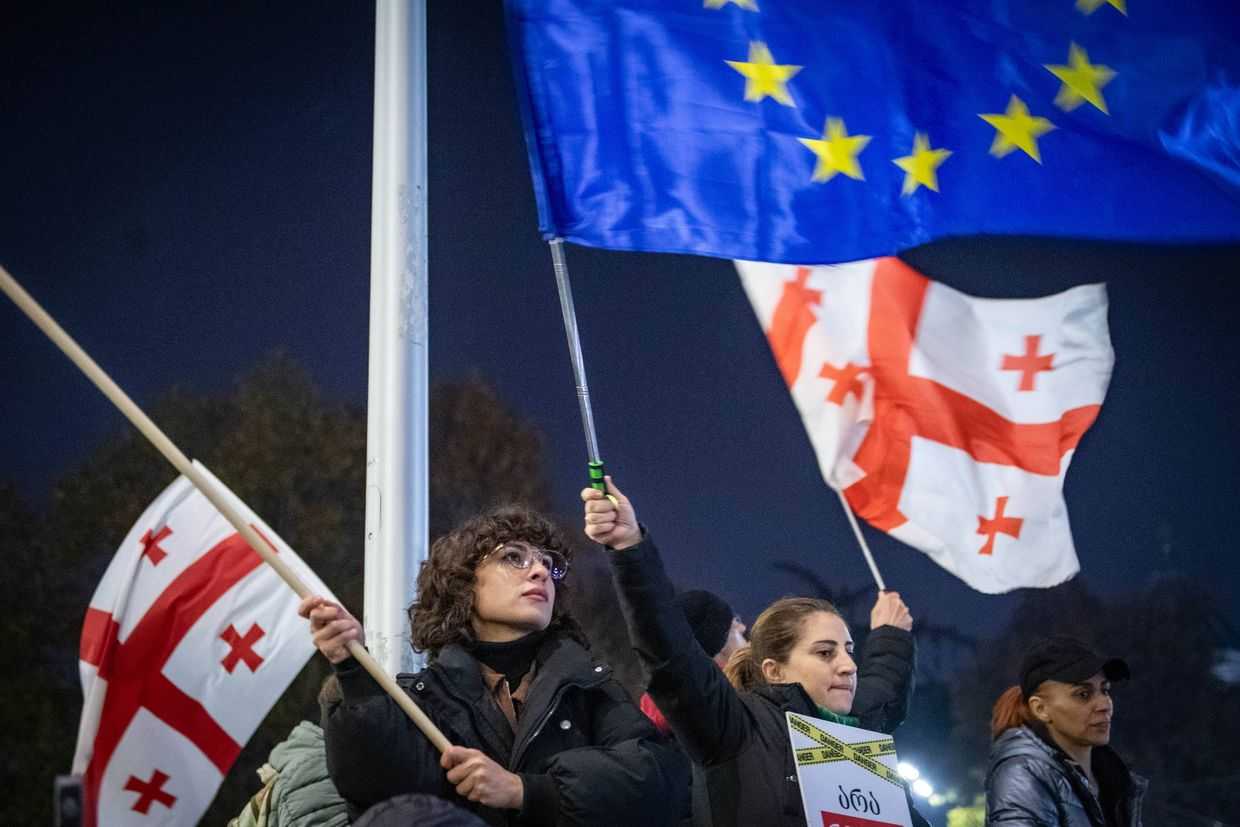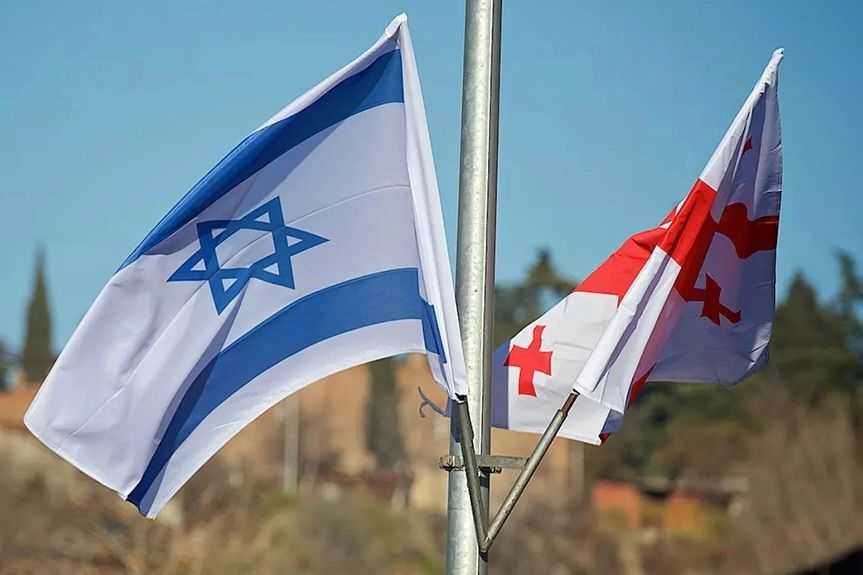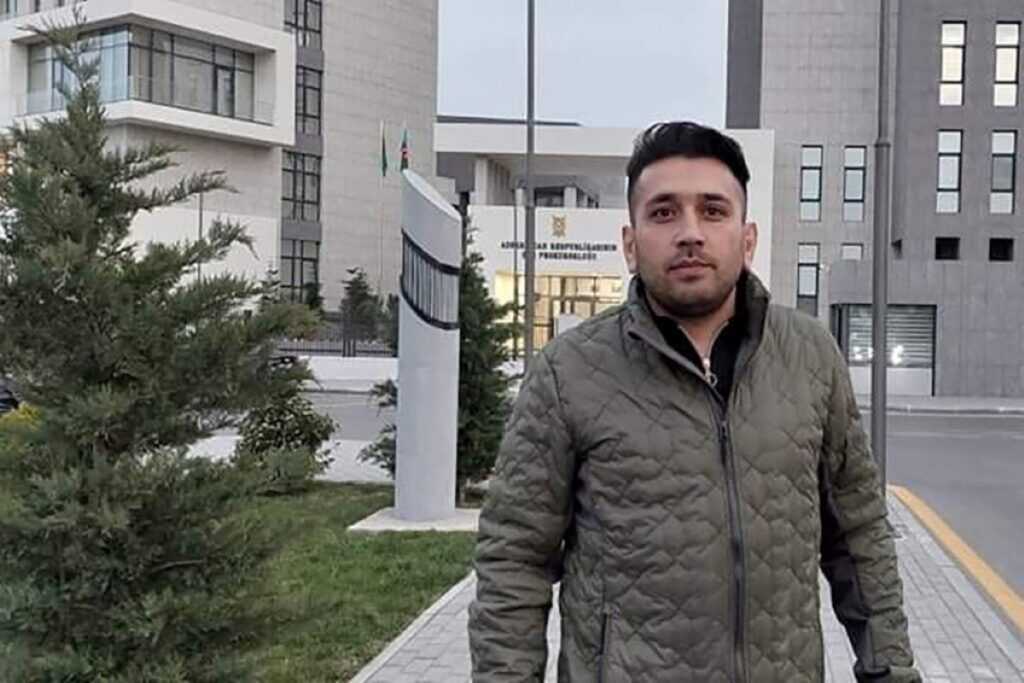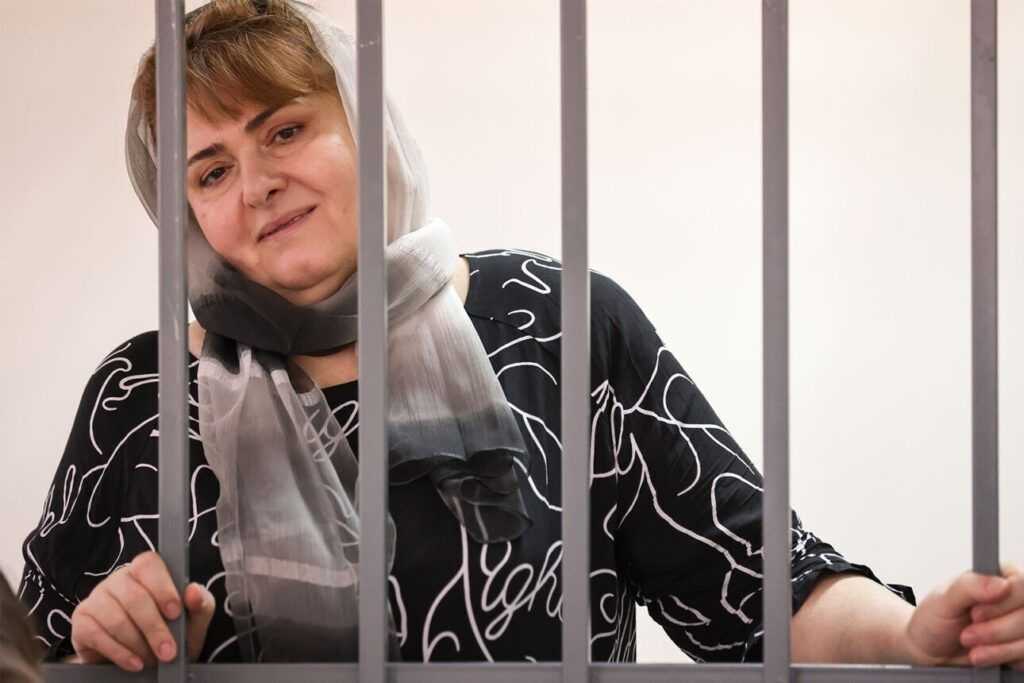Opinion | 4 October: an unsuccessful uprising or a trap for Georgian democracy?
Whatever the truth of the 4 October events, they have given Georgian Dream the perfect pretext to finish its repressive crackdown.

On 4 October, a large demonstration took place in Tbilisi, intended by its organisers to act as a ‘peaceful revolution’. Tens of thousands of people gathered on Liberty Square to voice their continuing protest against the Georgian Dream regime’s authoritarian policies and the ongoing unfair and unfree municipal elections.
According to certain statements from the organisers, they wanted to show that only a revolution could dismantle the regime — notably, however, the focus was on a ‘peaceful revolution’. When the call came to physically reclaim captured institutions, most people paused.
This should have been encouraging. It showed that Georgian society still believes in democratic change, and still rejects violence as a solution. The people recognised the red line and refused to cross it.
Yet, in the end, this restraint became irrelevant. The tearing down of the presidential palace fence by several dozen people was enough for the ruling Georgian Dream party to portray hundreds of thousands of people as insurrectionists.
Writing only a few days after the fact, we cannot yet say how 4 October 2025 will be remembered. What we do know is this: Georgian Dream is already writing its preferred version of the story.
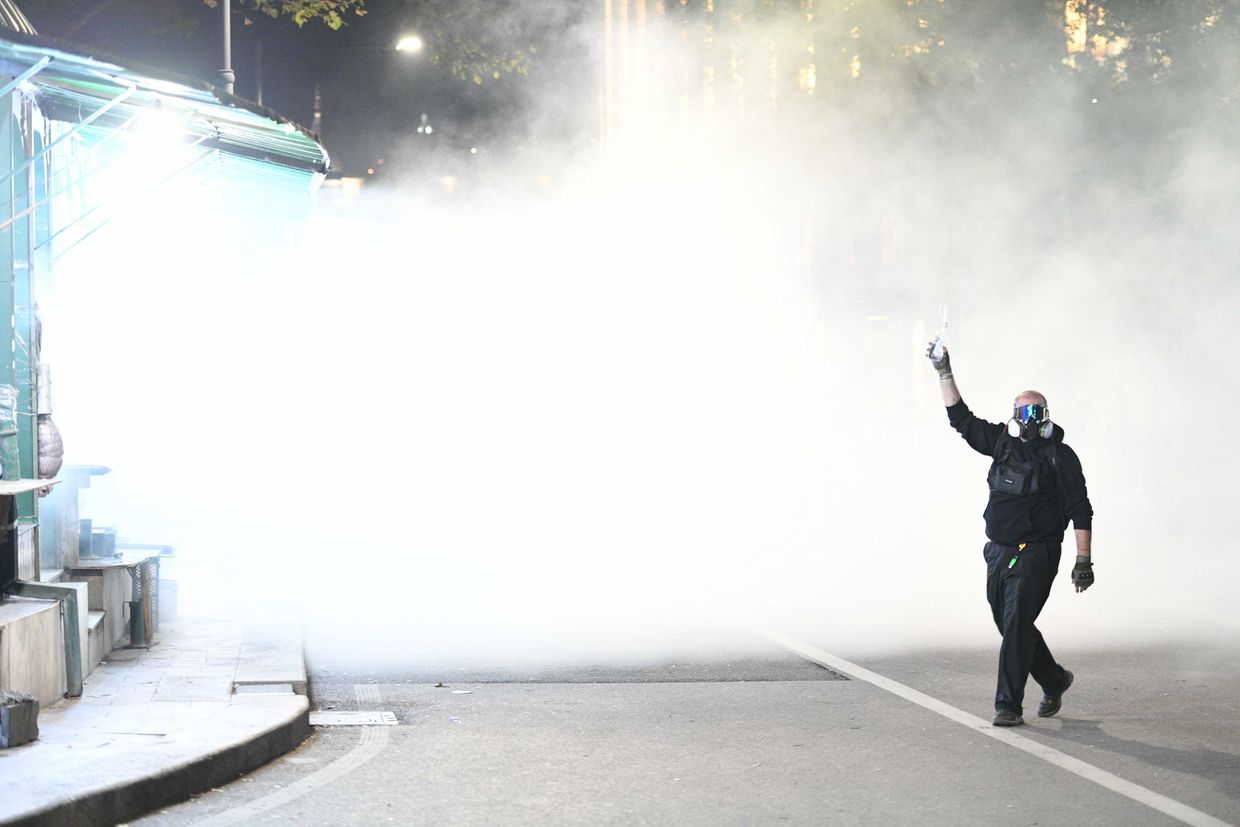
Currently, there are two competing narratives about 4 October. In one, the protest was a genuine uprising against an illegitimate ruler that failed, possibly aided by the regime, which then exploited the consequences to achieve its own objectives. In the other, it was a carefully orchestrated provocation designed to justify the very crackdown that followed.
The organisers themselves have repeatedly claimed to have been betrayed in some way. From some of their statements, it appears that their uprising attempt was genuine, but events didn’t unfold as they had been promised or led to believe. Consequently, it’s possible that the security service’s actions preemptively undermined their support structure.
Those who hold the second position instead claim that the organisers had no factual grounds to believe their initiative would succeed. Therefore, they conclude that everything may have been carefully planned and orchestrated in advance.
We may never know which is true. But while society is engaged in understanding the truth, here’s what matters for the regime: Georgian Dream needed the events to serve its purposes.
The ruling party, which has lost both internal and external legitimacy following its anti-European and authoritarian actions, and which has faced over 300 days of protests on Rustaveli Avenue, now believes it can turn the tide.
The violence on 4 October — whatever its true origins — handed the regime everything it needs to attempt a transformation:
- A new story. The regime will try to rebrand itself from the party that rejected Europe, imprisoned opponents, and crushed civil society into the defender of Georgia against forces that seek power through violence. It will attempt to retroactively justify every authoritarian measure, from the foreign agents law to media restrictions, as prescient protection against precisely what happened on 4 October.
- Moral high ground. Georgian Dream will leverage the politics of national security threats, where the defender always wins the moral argument. It will try to make harsh measures appear as patriotic duties, dissent as dangerous, and the opposition as, at best, naive, or at worst, treasonous.
- International approach. The regime will tell Western partners: recognise our version of events, or reveal yourselves as part of the plot against Georgia. The election day protests, they will argue, was the culmination of a long conspiracy.
- Carte blanche for repression. This is where the regime will try to turn theory into practice, with 4 October providing the pretext it needs to pursue its endgame: eliminating not just active opposition, but the very possibility of opposition.
Georgian Dream’s strategy is already in motion. The 300-day protest on Rustaveli Avenue, that stubborn symbol of Georgian resilience, is now target number one. The regime understands what it represents: it is a sign of the regime’s weakness, that Georgians haven’t surrendered, that resistance is possible.

What will the regime do next? Let’s be honest: the opposition barely exists anymore. Some parties face imminent banning. Others destroyed what remained of their credibility by participating in municipal elections together with the regime, refusing to take part in the boycott. Voter trust, already fragile, has collapsed.
The pro-democracy movement desperately needs what all movements need to deal with a crisis: time and space to think and an opportunity to rebuild.
But the regime understands this too. That is why it won’t allow said time and space. Georgian Dream will maintain pressure, exploit every division, deepen every split, and polarise every debate. The goal is to prevent the very reflection and renewal that might threaten its power.
Meanwhile, here’s the difficult truth: Georgian Dream is executing a plan that works — as long as democratic forces keep reacting instead of acting, keep dividing instead of uniting, keep speaking to themselves instead of reaching that vast middle of Georgian society that hasn’t joined the protests, but hasn’t joined the regime either.
The Rustaveli protest continues, but it will be more difficult to maintain every day. Everyone involved knows that stopping means surrender.
Meanwhile, the regime grows bolder. It’s attempting to act quickly: to rebrand itself from what it is — a tool for Russian interests masquerading as Georgian patriotism — into what it claims to be: the sole legitimate defender of Georgian sovereignty. To make authoritarianism seem not just necessary but noble.
And how will history remember 4 October? Will it be the day the regime finally broke Georgia’s resistance — or the moment when those who still believe in democracy faced a crisis and found the courage to confront it?
That story isn’t written yet. It’s being written right now — in the decisions, words, and small acts of everyone who still believes Georgia belongs in Europe, not as a satellite under Russian influence.
Georgian Dream is counting on fear and exhaustion. It believes that after 4 October, people are too divided, too tired, too wounded to continue fighting. It believes the world will look away, that protests will fade, that banning opposition parties will no longer shock anyone. It believes repression can become normal.
4 October was a gift to Georgian Dream. The regime is now unwrapping it, piece by piece.
The only question is whether and how anyone can take it back.



